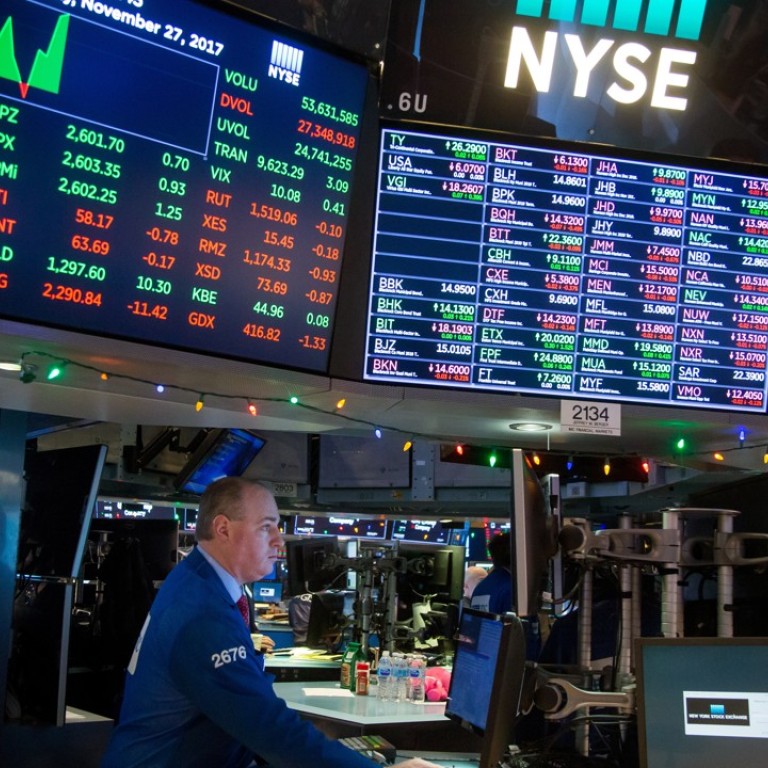
Persistently low volatility is the issue in financial markets, not the daily ups and downs
The most damaging effect caused by the long period of tranquillity in markets is the risk it poses to financial stability when bets on the calm continuing start to unwind
Whoever said historically low levels of volatility in global markets are breeding complacency?
In the financial media and market research divisions of investment banks, hardly a day goes by without a journalist or analyst commenting on the sudden decline in a major stock market index or the abrupt increase in the yield on a benchmark government bond.
In the latest example of the extreme sensitivity of financial commentators to daily moves in markets, the modest 0.3 per cent rise in the S&P 500 equity gauge on December 7 was the focal point of attention due to the fact that it marked the end of a four-day slump. To the casual observer, the recent slide in the index was a non-event: the entire four-day decline amounted to a fall of just 0.7 per cent. Yet this was the longest losing streak for the S&P 500 since March.
In the year since the US presidential election on November 8, 2016, the average daily movement in the S&P 500 fell to just 0.31 per cent, representing the calmest 12-month period in more than 50 years, according to research from the Financial Times. In addition to the historically low level of actual, or realised, volatility, international investors do not expect volatility to pick up any time soon. The VIX Index, a measure of anticipated volatility in the S&P 500, fell to its lowest level on record in July and remains close to this level.
When volatility is as muted as it has been over the past year, even relatively minor and inconsequential changes in global asset prices attract attention – indeed too much attention.
One of the many adverse effects of the collapse in volatility is that it magnifies market moves, causing analysts and journalists to read too much into daily declines in asset prices.
Nowhere is this more apparent than in the closely watched US debt markets. One loses count of the number of times since the start of this year (most recently in September) that a sudden jump in the yield on benchmark 10-year Treasuries has been portrayed as the start of a sustained decline in bond prices, presaging a bear market. Yet despite the succession of warnings about a sharp sell-off, the 10-year Treasury yield currently stands more or less at the level at which it stood at the start of this year.
Another example of low volatility-induced overstatements in market commentary is the fixation on the slightest shift in monetary policy. While this is not surprising given that it is central banks’ ultra-loose policies which are mainly responsible for the dramatic drop in volatility, the near obsession with the withdrawal of stimulus by leading central banks is misplaced given that financial conditions have actually eased since the Federal Reserve first raised interest rates in December 2015.
Yet by far the most damaging effect caused by the long period of tranquillity in markets is the risk it poses to financial stability: low volatility begets even lower volatility as traders and investors make huge speculative bets that the calm is likely to persist for some time yet.
One of the most lucrative investment strategies this year has been to “short”, or sell, volatility by buying securities whose value increases when the VIX drops. The “short-vol” trade has thrived as many investors remain confident that every spike in volatility will quickly give way to renewed calm. The rapid build-up of these bets comes at a time when valuations in bond and equity markets are increasingly stretched and when the tide is turning in monetary policy.
The danger is that when a sharp and sustained rise in volatility finally occurs – the last major spike took place just before last year’s US presidential election but proved to be short-lived – the disorderly unwinding of these low-volatility bets will exacerbate selling pressure in other corners of the market as investors try to offset their losses by reducing their exposure to so-called risk assets such as emerging markets and high-yield bonds.
Make no mistake, this year’s lifeless VIX looks and feels like the calm before the storm.
Unfortunately, the longer journalists and analysts keep overreacting to falls in asset prices, the more likely it becomes that investors will keep betting on low volatility and rising markets.
At some point, however, the calm will shatter, causing a potentially brutal unwinding of the popular short-vol trade. The VIX, which is known as Wall Street’s “fear gauge”, will not remain becalmed forever.
Nicholas Spiro is a partner at Lauressa Advisory

